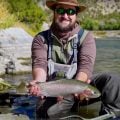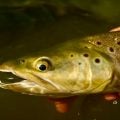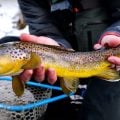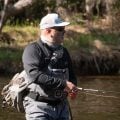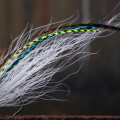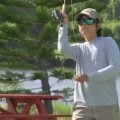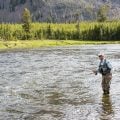5 Ways to Catch Bigger Trout
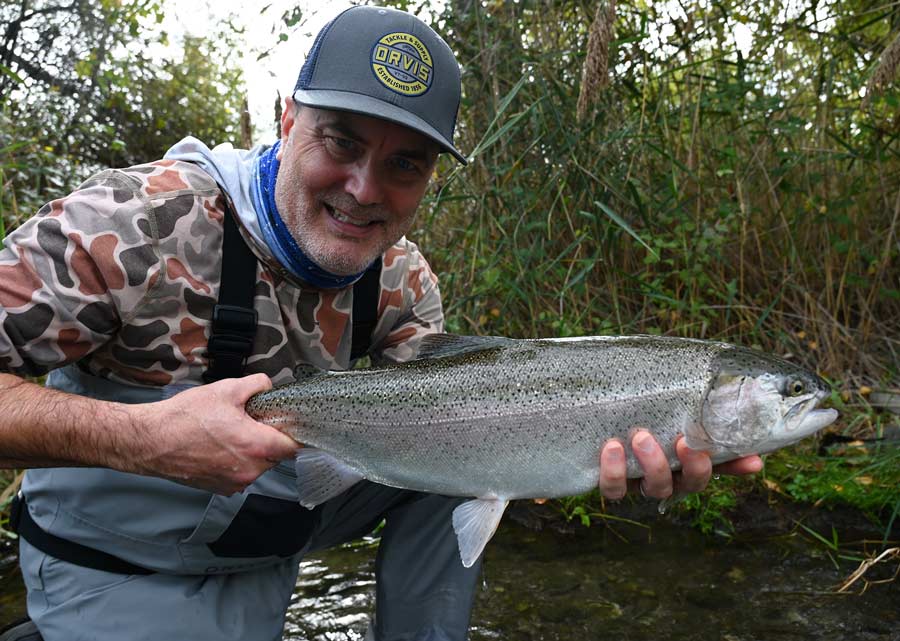
This rainbow was the only fish MidCurrent editor-in-chief Phil Monahan caught that day, but it was worth it. Photo: Sandy Hays
Everyone likes to catch big trout. Whether you’re talking about a chunky, 10-inch brookie out of a tiny creek or a massive, 30-inch brown from a wide river, hooking and landing a trophy trout is the stuff that fly-fishing dreams are made of. Every time we grab our gear and head down to the water, we wonder if perhaps today is the day that we run into a monster.
Many anglers treat catching a big trout as a freak occurrence. They happened to be in the right place at the right time and without rhyme or reason, they just got lucky. However, just as buying multiple scratch tickets or playing the right poker hand at the right time can increase the odds of winning big, there are ways to tilt the odds in your favor when it comes to big trout fishing. In fact, with the right strategies, you can actually make catching a trophy-size trout a fairly regular occurrence.

Pyramid Lake is well known for its huge Lahontan cutthroats. Photo: Kubie Brown
1. Choose the Right Water
To catch big trout consistently, you have to fish in the right body of water. No matter how much you want to believe that those big hogs are swimming in all your favorite fishing spots, the fact is that not every stream, river, or lake has the capacity to produce big trout. Many waterways simply don’t have the proper forage, water temperatures, or habitat to support big fish, so you need to make sure you spend your time fishing in places that can.
Concentrate your efforts on larger waterways with a lot of nutrients. Focus on rivers and lakes with a significant biomass of mayflies, caddisflies, and scuds, as well as forage fish like dace, chubs, whitefish, and sculpins. All this food will help to kick-start a trout’s growth and keep them growing consistently throughout their lives.
It’s important to note that you’ll have better luck catching big trout in nutrient-dense waters that have relatively low trout populations. There is less competition for food, providing trout with an abundance of calories and lots of opportunity to bulk up. Keep in mind that this also means that you’ll usually catch fewer fish per trip.
Find a river or lake where water temperatures stay in a trout’s optimal growth range throughout the year. As coldwater fish, trout prefer water where temps stay between 50°-65°F. This is vital for both trout growth and overall health. In fact, in rivers where water temps consistently rise to 70° or more, trout can become stressed and will actually completely stop feeding—and, therefore, growing—until the water temperatures cool, creating a higher population of smaller fish and fewer big ones.
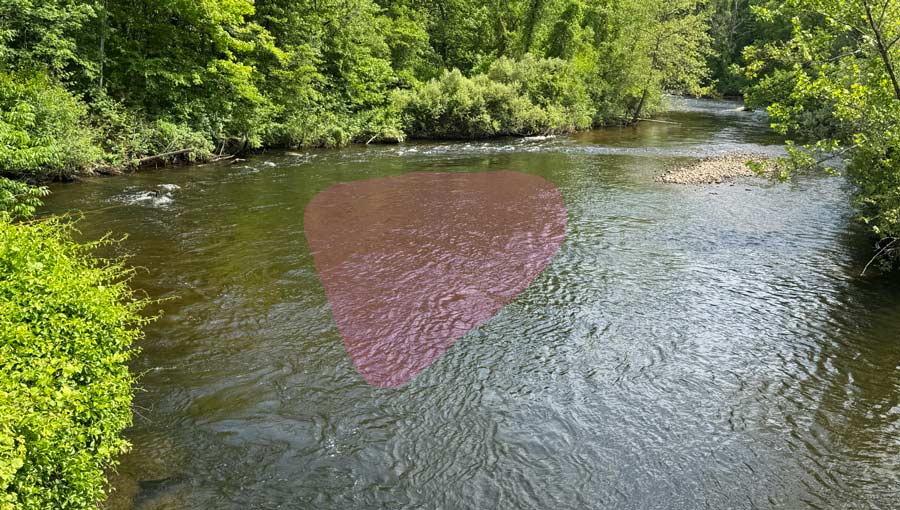
Don’t look for big fish in the main current. Instead, focus on the softer, deeper water alongside the fast water. Photo: Phil Monahan
2. Target Soft Water
Big trout are lazy trout. While they may spend their early years living in fast currents, chasing after food, and constantly burning calories, once they reach a certain size, they simply wise up. They learn how to conserve energy and wait for food to come to them, so they usually hang out in softer, slower moving water.
Look for big trout in backwaters, sloughs, and pockets of the slowest moving water you can find, especially those that are immediately adjacent to faster currents in the main river. These areas can include deep holes or drop-offs in the middle of the river or even skinny flats of frog water close to the bank, where there’s lots of overhead cover so the big fish will feel protected.
Big trout holding in soft water will usually sit in spots where they can easily rest and watch for food passing by in the main current. Drift or work your flies along the edges of seams where faster and slower currents meet. Try not to cast directly into the soft water itself, as you’ll often spook the fish and blow your chance.

Big trout often live in hard-to-get to lies, which means you have to be willing to lose a few flies. Photo: Kubie Brown
3. Fish the Harder-to-Reach Places
When you’re looking to catch big trout, it pays to fish where no one else is fishing. This doesn’t necessarily mean that you have to hike into the back country to fish an untouched gem or fish exclusively on private water where the number of anglers is limited (though it helps). But it does mean that you often have to fish in tougher spots that other anglers will simply overlook.
Big trout tend to hold in areas with a lot of overhanging vegetation, along undercut banks, and in side channels that see less pressure than the main river. Places like log jams and boulder gardens are fantastic targets, but you have to be brave enough to lose a few flies if you expect to hook into the big trout rough cover. By casting right into the heart of these areas, you run the risk of getting snagged, but you’ll also connect with more big fish.

Bigger fish rarely show themselves when the sun is out, so fishing at dawn, dusk, or even dead of night is required. Photo: Kubie Brown
4. Fish at The Right Times of Day . . . Or Night
Big trout are notorious for feeding in low light, early in the morning and late in the evening. Often, they become completely nocturnal, especially during the dog days of summer, when warm water makes the fish less active. As such, your best bet for catching big trout consistently is to fish during those times when they’re most active—which often means before sunrise and well after dark.
When you’re fishing in low light, focus on spots you are familiar with, where you can comfortably wade or row through without a light. Avoid using a headlamp or other lights on your boat, as it can spook the fish. Use large flies, such as streamers that push a lot of water or large dry flies or mouse patterns that make a splash when they hit the water and can be twitched or skated along the surface. You want to attract a trout’s attention, and if you stay determined, you’ll usually be rewarded with a hard strike from a big fish.

You’ve got to be willing to spend time on the water, waiting for something to happen. Photo: Phil Monahan
5. Be Patient and Selective
Catching big trout consistently is all about paying your dues. The fact is that in most rivers and lakes, the truly big trout are few and far between. As they grow bigger, trout eat less frequently and specifically look for larger prey or larger amounts of food. This means that big trout are only really looking to feed on certain flies, in certain places, and during certain conditions. To catch them, you have to be willing to sacrifice quantity for quality.
While it’s easier said than done, you have to be willing to get skunked. You’ve got to be up for going fishless for hours while casting a big streamer or be willing to ignore dozens of smaller risers while you patiently wait for that bigger nose to appear during a hatch. It’s a game where you sacrifice instant gratification and practice self-discipline. In the end, the juice is worth the squeeze when you get the net under a gorgeous trout.
No Pain, No Gain
When you land a truly big trout, you immediately know you’ve done something special. Holding one your hands, you somehow feel more connected to the natural environment than you do with a smaller fish. It’s as if that larger, older fish is plugging you back into the rhythms of the river and allowing you to become a part of its journey. Catching a big trout can remind you of why you started fly fishing in the first place, and when it comes down to it, they leave you only wanting more.
